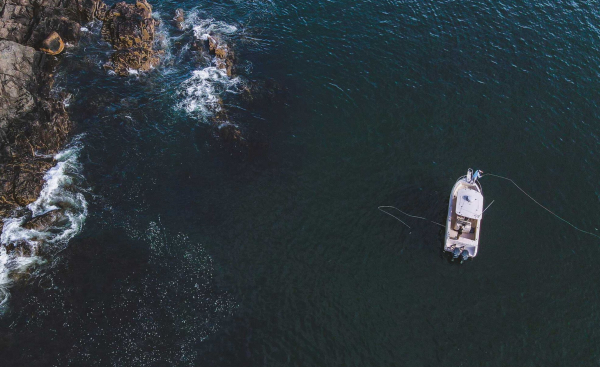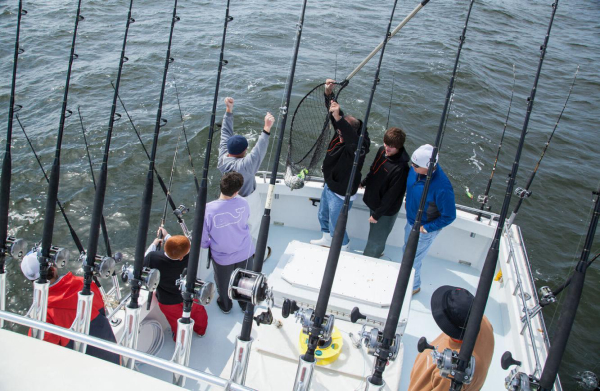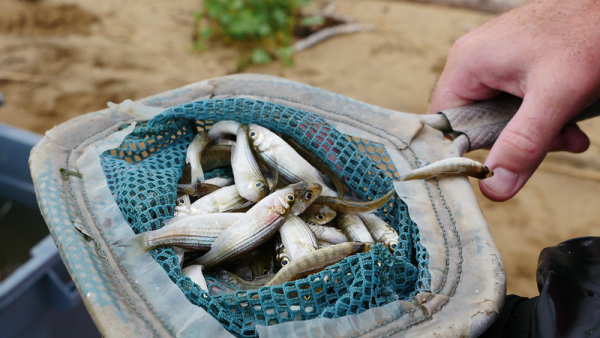
Striper fishing on the mid-Atlantic Coast has been nothing short of spectacular the last few years as several huge year classes of fish have grown to maturity. Particularly along the shores of New York and New Jersey, anglers are seeing some of the best action in modern memory. They’re not only catching lots of fish, but lots of big ones, well over the tiny slot limit of fish that may be harvested, 28 to 31 inches nose to tail in coastal waters.
A lot of fish are being caught northward as well, all the way into Canadian waters where striped bass used to be rare.
It seems too good to last—and it is.
Striper anglers in the know are all crying the blues because of what fishery researchers are reporting on the striped bass.
Juvenile Striper Numbers Down
The American Saltwater Guides Association says the one reliable constant of striped bass management is the Juvenile Abundance Index (JAI) from Chesapeake Bay, which is where most Atlantic Coast stripers have historically spawned. It’s the average number of small bass that are caught by researchers pulling small mesh nets in areas where young bass are likely to hang out. And it’s way down in recent years.
Primary Atlantic Coast striper spawning historically has been confined to a relatively narrow band from Virginia to New York, with Chesapeake Bay producing most fish by far. These are the fish that migrate up and down the coast to provide fisheries as far south as North Carolina, as far north as Maine.

The researchers use a small mesh beach seine to sample designated areas in known striped bass spawning grounds, collecting young-of-the-year fish (juveniles less than a year old) to calculate an index representing the average number of striped bass caught in each seine haul, which indicates the overall abundance of juvenile striped bass in the area. The sampling is done in summer, after fry hatched in spring have had time to reach a few inches in length. It’s a useful measuring stick for determining how many striper eggs make it at least to the point of being fully hatched.
The nets are 4’ deep and 100’ long, with a ¼” mesh, so obviously they’re getting a pretty small sample, but the scientists say the method has more or less proven accurate over the years, giving a rough picture of what the adult stocks will be some 5 to 10 years after each sampling. (It takes about 10 years for a coastal striper to reach 40” size and weight around 27-30 pounds, per researchers.)
The pinch point for striper survival is their demanding hatching venue. The fish travel far up coastal rivers feeding into the Chesapeake and other coastal bays and spawn there, and then the fertilized eggs float with the current for 1.5 to 3 days. The water has to be well oxygenated, free of serious pollutants and moving fast enough to keep the eggs moving. If they sink to bottom, they die. (This is one of the reasons stripers stocked in fresh water lakes rarely spawn successfully—there are few impounded rivers with enough length and current to allow survival of the fry.)
So, all this said, back to the index.
Currently, the Bay JAI paints a bleak picture. For perspective, the average index is 11. The outstanding 2015-year class anglers are now enjoying had an index of 24.2. But for the last five years, that index has been below 4.0. Not good, obviously.
The ASGA and other conservationists say the fishery is about to hit the wall. There are no good year classes of fish coming into the pipeline. Stripers live about 10 years if not caught or eaten by sharks or other predators.

Poor Spawning Conditions Cause Slump
What’s causing the poor egg survival? State researchers in Maryland and Virginia say warmer winters, less rain and less snow melt has reduced water flow in the primary spawning rivers, resulting in fewer eggs surviving to hatching time. These may or may not be the result of climate change, but they don’t bode well for the future.
The winter of 2024-25 is projected to be colder and wetter than average in the area, so it’s possible that a strong year-class in the spring of 2025 could bring back striper numbers down the road. However, there seems to be no silver lining to the fishery for the next several years as the largest fish age out of the population and there are fewer young adults growing into it.
Many avid striper anglers in the region are calling for a harvest shutdown, even though just about everybody loves to eat striped bass. There’s already a lot of catch-and-release, so the impact of a no-harvest rule would be moderate.
One bright spot is that stripers attempting to spawn in more northern rivers, including New York’s Hudson and the Miramichi in Canada, are having greater success—a common phenomenon as species migrate north with the warmer average water temperatures. (The fish are not welcome in the Miramichi, however, which is one of the last remaining Atlantic salmon rivers—local anglers and conservationists are doing their best to get rid of them there because stripers eat small salmon.)
To learn more about the issue, visit www.saltwaterguidesassociation.com.
— Frank Sargeant
Frankmako1@gmail.co